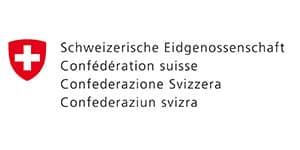The permanent Mission of Switzerland's climate Plan in a nutshell
GHG Reduction Objective by 2030 : - 45%
by implementing its climate action Plan, the permanent Mission of Switzerland aims to reduce its overall GHG emissions (from 2019 levels) by 45%
ENERGY emissions reduction ≤ 65%
Actions to be implemented by 2030: 5
FOOD emissions reduction ≤ 50%
Actions to be implemented by 2030: 5
MOBILITY emissions reduction ≤ 30%
Actions to be implemented by 2030: 5
Contribution to climate action
The Swiss Foreign Affairs uses the term “sustainable embassies” under which to share sustainable practices for the Swiss diplomatic outposts. The term collects a mean to a holistic optimisation of Swiss embassies in the three dimensions of sustainability (environment, economy and society). In the context of this project, measures are presented in particular in the environmental dimension, specifically in the areas of energy and resource efficiency, renewable energies, climate protection, promotion of biodiversity and environmentally conscious construction. A full report on the actions of the Swiss Foreign Affairs toward climate action is available on their website.
Thematic actions
Energy
The Permanent Mission of Switzerland integrates the importance of reducing the carbon footprint of its operations in all areas of its work. Various measures are therefore implemented to ensure positive impacts in reducing CO2 emissions. With the support of the Federal Office for Buildings and Logistics, the buildings of the Swiss foreign affairs in Switzerland and abroad comply with the “Swiss Sustainable Construction Standards”.
Food
Vegetarian menus and the use of local and seasonal products are promoted at the Mission’s receptions and events. The use of plastic bottles has been reduced to a minimum, in favour of glass and cardboard recipients. Mission staff are also encouraged to adopt an emission-reducing practice for individual consumption during working hours.
Mobility
The Mission promotes the use of soft mobility for urban travel, such as public transport, bicycles, electric bikes and walking. Electric bicycles are provided for business use. With the return to a normalised situation, teleworking will continue to be implemented on a part-time basis to reduce commuting. For participation in events abroad, the Mission asks its members to take into consideration the impact of CO2 emissions. In line with the flight reduction policy of the Swiss Federal Administration, the use of the train is prioritized when travelling in Europe.
In addition, the Swiss government encourages all their employees in Switzerland to participate in the nationwide “Bike to Work” campaign. Employees of the Federal Administration are motivated to use their bicycles for commuting to work over a period of several weeks during the challenge. By shifting to an environmentally friendly means of transport, the environmental impact of mobility is also reduced.
Sustainable IT
The Swiss government published guidelines according to which IT and electronic appliances should be purchased. Further guidelines outline how to charge the personal computers for a longer lifetime of the batteries and lower electricity consumption. Specific guidelines can be found on suisseenergie.ch
Waste management
The Mission has set up sorting centres to ensure better recycling and reduce the proportion of waste. All members of staff are encouraged to keep printing to a minimum and to send and receive documents electronically.
Footprint and emissions by scope
2050Today’s greenhouse gas (GHG) emissions measurement methodology follows the GHG Protocol. The Protocol provides standards and guidance for organizations to measure and manage climate-warming emissions. It was created in 1998 through a partnership between the World Resources Institute (WRI) and the World Business Council for Sustainable Development (WBCSD).
According to the GHG Protocol, the distribution of emissions is done by scopes:
Scope 1 represents direct emissions linked to the consumption of fossil fuels.
Scope 2 represents indirect emissions from the generation of purchased electricity, steam, heating and cooling consumed by the reporting company.
Scope 3 includes all other indirect emissions that occur in a company’s value chain (i.e. purchased good or services, business travel, employee commuting).
The 2050Today carbon footprint takes into account the reported emissions generated by the activities of the institution over one year and is divided by categories:
Energy and water
It takes into account the amount of the consumed electricity produced and purchased by the institution. The energy consumed to heat and/or cool the institution’s building area and the consumed water are included as well.
Mobility
It takes into consideration business travels and commuting (on a survey basis).
Food
The CO2 impact of food includes the catering of the institution and individual consumption (on a survey basis) during working hours.
Purchased goods
The perimeter of purchased goods is set to a list of new office equipment, new mobility equipment (vehicles) and construction materials.
Waste
The perimeter of the waste inventory is set to waste production from facilities and internal operations of the institution
It has to be noted that the collected data of the 2050Today members resulting in each carbon footprint are not yet fully standardized and might not be entirely complete. Data collection is being progressively harmonized and improved. Therefore, direct comparisons between tCO2 / employee among institutions – be it in general or per sector – are not yet possible nor relevant.
To ensure the reliability, the accuracy and a recurrent updating of the carbon footprint assessment, 2050Today is advised by an international Carbon Footprint Scientific Committee.







